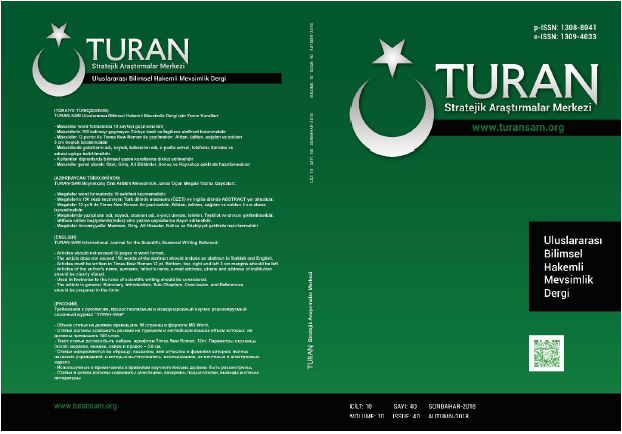AZERBAYCAN DİLİNİN KUZEY GRUBU LEHÇESİ ve ŞİVELERİNDE CÜMLE ÜYELERİNİN
İŞLENME ÖZELLİKLERİ VE QIPÇAQ ELEMETLERİN ENTEGRASYONU
USING FEATURES OF MEMBERS OF SENTENCES IN NORTH GROUP DIALECTS AND ACCENTS OF AZERBAIJANI LANGUAGE AND INTEGRATION OF ELEMENTS
Author(s): Könül SəmədovaSubject(s): Theoretical Linguistics, Phonetics / Phonology, Comparative Linguistics, Philology
Published by: Sage Yayınları
Keywords: North group dialects; Turkic languages; Kipchak language; members of sentences;
Summary/Abstract: This article discusses the main and secondary members of speech of the Azerbaijani language in the Northern dialects, and are given the following examples. One of the differences that separates our dialectical and accent language from the literary language is the fact that object that used with I and II personal pronouns and sometimes with the third personal pronoun, often do not show itself in the sentence. Sentences without subject are often found in dialogues, command sentences, proverbs, applause, and curses. The predicate and predicate category in the dialects in contrast to the literary language, in some cases is falling. In contrast to literary language, there is observed compound predicates in Northen group dialects of Azerbaijani language. Object that is expressed with II and III noun combinations are more used in Nothern group dialects. As in the ancient and modern Turkic languages, Kipchak texts adverbs attract attention with its rich meaning. Different types of adverbs are used in the North group dialects. In the North group dialects, adverb is also processed after predicate in the sentence.
Journal: TURAN-SAM
- Issue Year: 10/2018
- Issue No: 40
- Page Range: 748-751
- Page Count: 4
- Language: Azerbaijani

